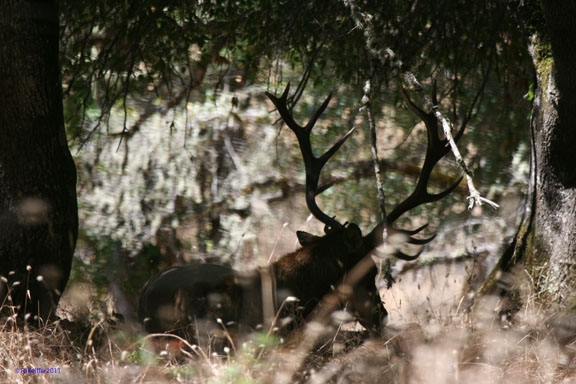During the Pleistocene period Cervus elaphus migrated over the Bering Straits land bridge onto the North American continent and slowly evolved into several subspecies of elk. The Tule Elk (Cervus elaphus nannodes) is considered the smallest of all the elk subspecies in N.A. and is endemic to California. Early explorers like John McLeod accounted for vast herds of the large deer, and estimates of 500,000 in the early 1800's are probably accurate.
However, rawhide trade (Hudson Fur Trading Company) in the mid-1800s, followed by the gold rush and cattle baron days of the 1850s and 1860s, led to the over exploitation of the tule elk until 1873 when only one tiny band was left. By 1895 only 28 individuals were left and they were fortunately protected by Henry Miller, the most prominent California cattle baron of the times. After Miller's death in 1928 hunting resumed and the herd was dwindled down again to a number of 72 head.
In 1933 Walter Dow took a small group of these tule elk to his ranch in Owens Valley, where they prospered, and through the subsequent efforts of California Dept. of Fish & Game and others, were relocated from this population and now several permanent herds have been re-established in historical ranges.
A shed elk antler found buried in the gravels of Parson's Creek (photo tomorrow) in 1907 prove that elk once roamed the hills of the Hopland Research & Extension Center. Although possibly a Roosevelt elk antler, it is most probably a tule elk's as the dry hot interior climate around southeast Mendocino County is more of the liking to tule elk. The tule elk bull photo below is from the re-established herd near Potter Valley, about twenty-five miles to the north of HREC.
(of note: you should be able to post comments to this blog now)
